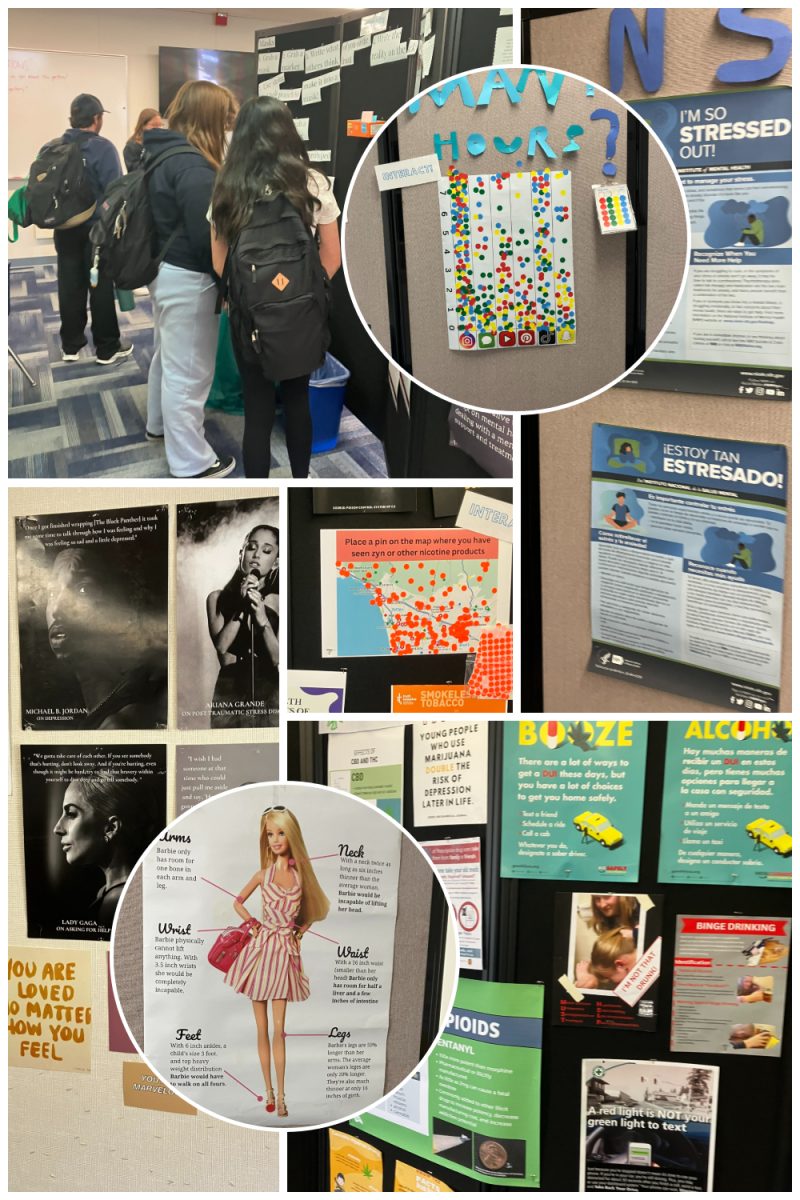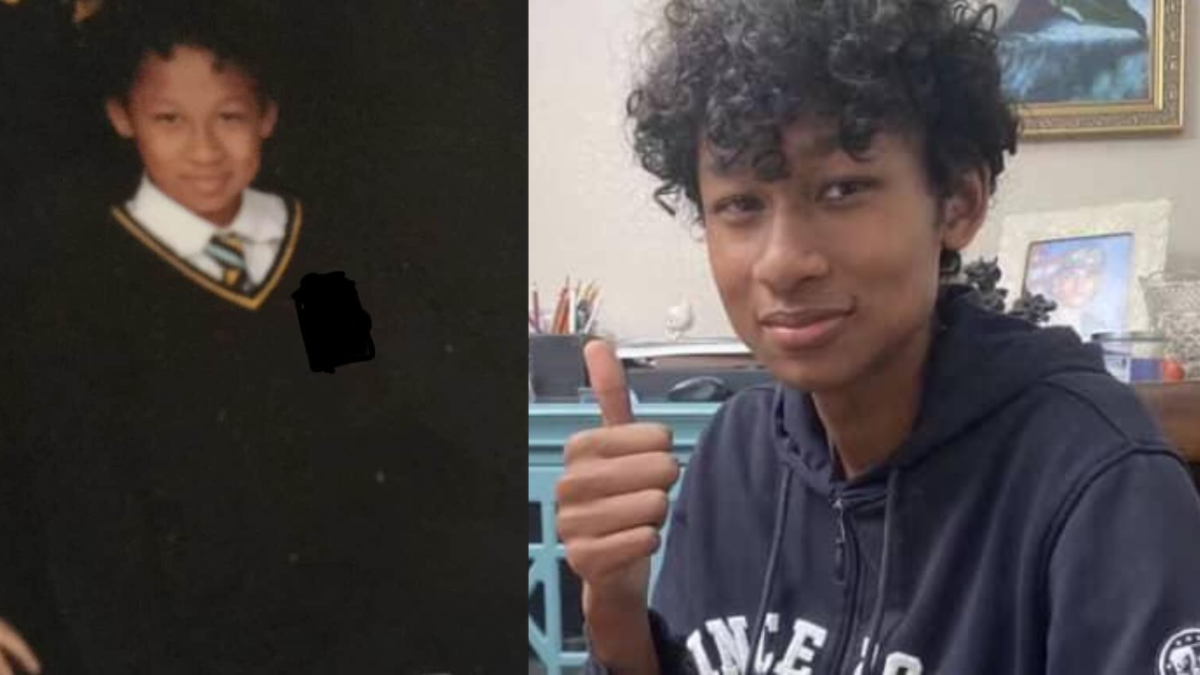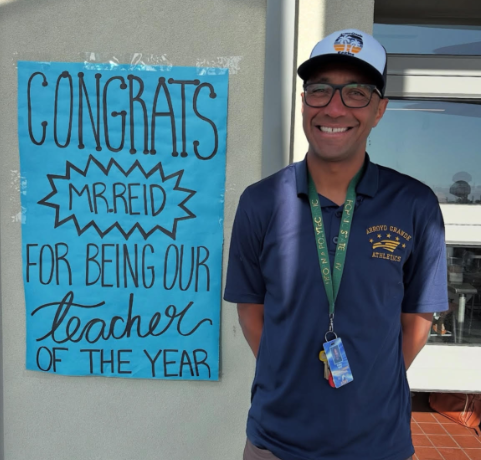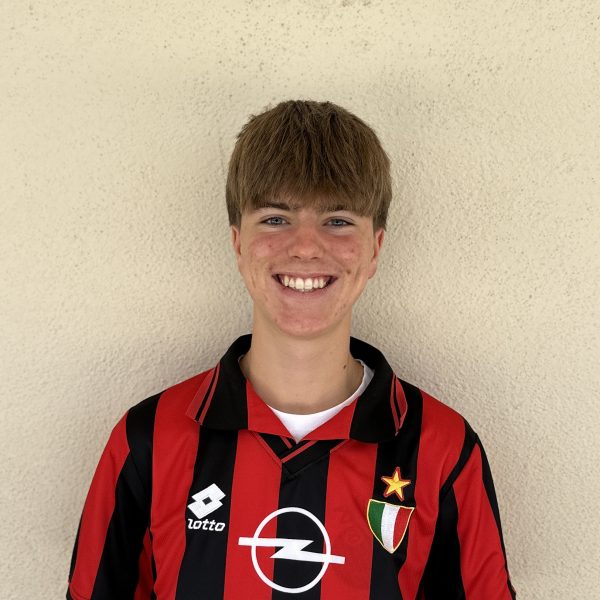What if a poster could start a conversation that saves lives? In room 504, a student-curated gallery is turning art into activism.
“The purpose of the Awareness Art Gallery is to bring awareness to problems that high schoolers face,” advisor of FNL club Brandon Sligh said. “So [the art pieces] could be mental health, drugs, and bullying—[issues] kids on campus could be dealing with.”
Run completely by students in the Friday Night Live club, the Awareness Art Gallery is a yearly campus project designed to educate, provoke thought, and foster open discussions about the challenges students face.
“It’s a cool way to raise awareness about teen issues,” Vice President Marissa Fugitt (‘25) said. “Sometimes it’s hard to get people involved, but if you’re looking at something that’s creatively done, it can help introduce the subject and make it more engaging.”
That creative drive is matched with a sense of student ownership over the gallery.
“Everything in the gallery—the graphics, the photos, the messages—was chosen by students,” President Emme Landers said. “It’s what we care about and what we think other students need to hear.
With the gallery being a yearly production, the club features new topics that they feel are relevant.
“I think the newest thing that we added on, and that we haven’t done in past awareness galleries, was about modern nicotine products,” Landers said.
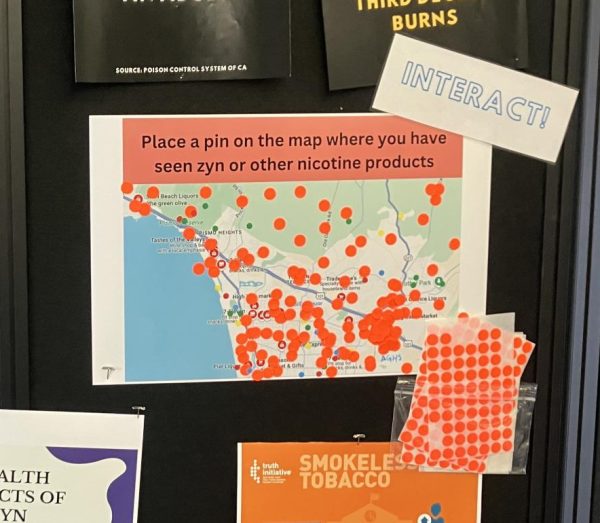
Alongside these new topics, the gallery revisited important issues like cannabis use, mental health, and stereotypes. One section stood out for its commentary on body image.
“[The gallery has] this one poster with the dimensions of Barbie showing how unrealistic beauty standards are,” Landers said.

Beyond the posters, the gallery is meant to be an engaging environment for students to connect to ideas and others.
“There’s a wall where students can write down different emotions they feel at different times,” Landers said.
As a future art history major, Fugitt sees the gallery as a tool for connection, not just a creative project.
“It’s meant to be engaging through the activities and visuals,” Fugitt said. “Art is important to people. It’s more than just information; it’s a way to connect and start thinking about issues differently.”
From an outside perspective, the gallery allows students to observe what other students on campus care about.
“I think it’s cool to see what other students in your classes are working on [on] campus and those passions that people have,” Landers said.
The club collaborates with the SLO County Behavioral Health Office, which provides mental health resources for the community and helps address issues featured in the gallery.

